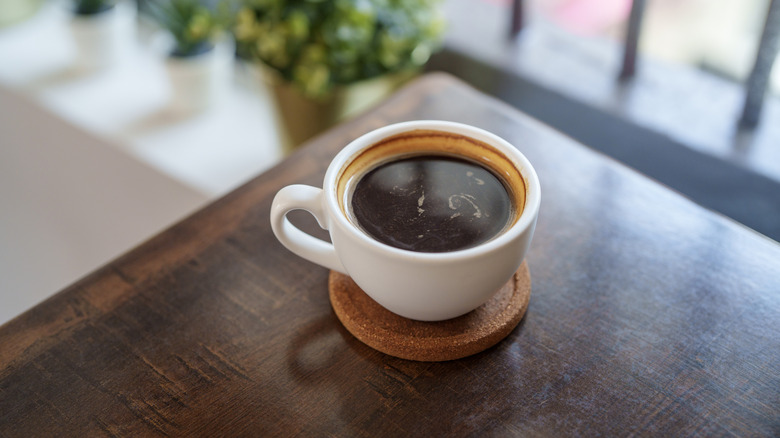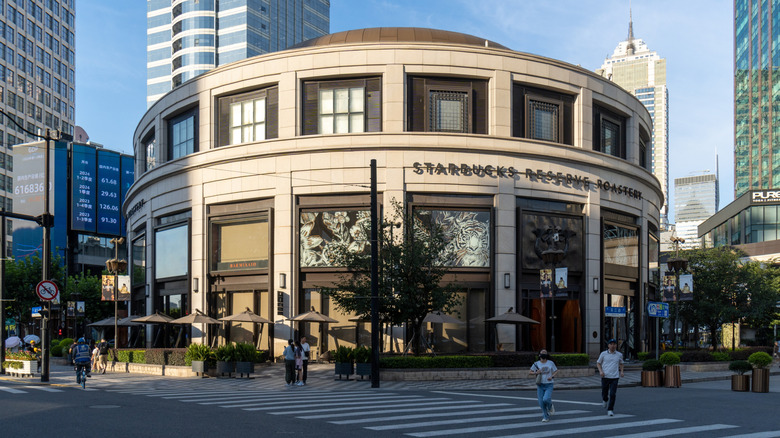This Coffee Machine Changed The Game, Then Disappeared
We may receive a commission on purchases made from links.
When you stop by a local cafe and buy a cup, the experience feels perfectly ordinary. As a result, it's easy to forget that the coffee industry is constantly evolving, with new styles of preparation going in and out of trend. In fact, only 30 years ago, there was no roundup of the best coffee roasters in America. The coffee culture that involves sourcing specific beans and noting tasting notes is a relatively recent phenomenon; prior to the 21st century, the focus stateside was all on Italian-style or Starbucks-flavored coffee drinks.
A breakthrough in savouring coffee origins came by way of a single machine: Clover. A large, semi-automated box, this brewer crafts black coffee, akin to a batch brew or French press. In today's world of simple pour-over coffee brewers, this clunky, oversized brewer, which sold in 2006 for $11,000, seems hard to justify. Yet from 2007 to 2008, the Clover stirred quite a buzz. At the shops that housed the few manufactured models, lines formed out the door, and media intrigue ensued.
It's all because the Clover enabled single-cup brews, meticulously tailored to highlight the bean. Like selecting a particular glass of wine at dinner, customers could purchase according to the flavors of a coffee's source country matched with a specific roast. And baristas tailored the temperature, brewing ratios, and extraction duration, thereby letting the intricacies of that particular coffee shine. It was a monumental step in making expensive and complex beans accessible to consumers.
The Clover brought hype and business misfortune
The Clover coffee brewing method enabled tweaking cups with a newfound precision. At the hands of well-trained baristas at specialty cafes, tasting notes once muted due to machine limitations now got their chance to shine. And once a recipe was pinpointed, it could even be digitally logged, allowing for improved consistency over other brewing devices. No surprise the hype kept coming; some even placed crosshairs on the Clover eclipsing espresso machines.
Meanwhile, Coffee Equipment Company — the small team of people who made the Clover — couldn't support the hype. The extremely complex machines were painstakingly built in a Seattle warehouse, at meagre volumes of often under 30 a month. And even aligning contracts with clients was not clicking. Intrigue escalated hand in hand with the company's hardships, until a shocking business decision: The sale of Clover to Starbucks in 2008.
At the time, Starbucks proliferated like fast food chains, but profits struggled. Some consumers criticized the quality, others the prices. With an ushered era in management, the company invested in Clover to enhance their brew quality — fancy bells and whistles involved. The move upset independent cafe owners. No more Clover machines could be sold, and the aforementioned database of recipes was erased. Some even suggested the company made the move in order to hurt third-wave coffee. Yet the Clovers did subsequently integrate into Starbucks brewing setups — assimilating into a new era.
Starbucks still employs Clover technology
The shops that previously drew lines out the door for their Clover machines were forced to adapt. They spun off in different directions, but specifically the V60 brewer, along with a few other hand pour over options, emerged as a favored new alternative. Sure, this funnel-shaped coffee preparation requires expertise and precision, but just like Clover, this enables painstaking perfectionism. Unlike the now phased-out ultra-complex machine, you can buy a Hario V60 Coffee Dripper for $9 (at the time of this publication).
Well, what happened to Clover? Once 2008 came to a close, Starbucks installed under a hundred machines. After that, they remained in operation, but expansion was slow: Clovers only numbered around 500 in 2013, and further proliferation has failed. Most operated for premium beans offered at Starbucks Reserve locations, so they remained under the radar of most consumers, although the machine maintained a small following. And in 2018, Starbucks nearly eliminated the Clover completely, further vaulting it into obscurity.
However, in 2022, Starbucks announced the re-release of the machine, with an updated Clover Vertica model. Now employed for both iced coffee and varying origins and roasts, this marks the reappearance of this influential machine, used in a way that's similar to its inception.


